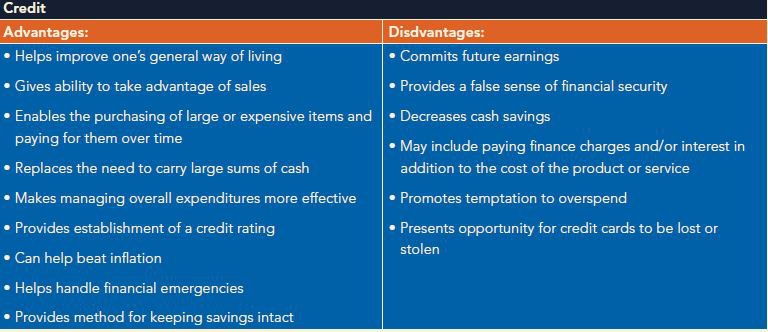Credit Unions in Wyoming: Comprehensive Banking Solutions and Member Benefits
Credit Unions in Wyoming: Comprehensive Banking Solutions and Member Benefits
Blog Article
The Ultimate Overview to Recognizing Lending Institution

Credit unions stand as unique financial entities, rooted in concepts of shared support and member-driven procedures. As we navigate via the intricacies of credit score unions, an insightful journey awaits to lose light on these member-focused organizations and just how they differ from conventional financial institutions.
What Are Cooperative Credit Union?
Cooperative credit union are member-owned banks that use a series of financial services to their members. Unlike conventional financial institutions, lending institution operate as not-for-profit companies, meaning their main focus is on serving their members as opposed to optimizing earnings. Participants of a lending institution typically share a common bond, such as benefiting the same employer, belonging to the exact same community, or becoming part of the very same company.
One of the vital benefits of cooperative credit union is that they frequently use greater rates of interest on interest-bearing accounts and lower rate of interest on financings contrasted to financial institutions. Federal Credit Union. This is because credit report unions are structured to profit their members directly, permitting them to pass on their incomes in the type of better prices and less charges. Additionally, cooperative credit union are known for their customized customer care, as they prioritize building connections with their participants to comprehend their unique monetary requirements and objectives
Background and Evolution of Lending Institution
The roots of member-owned economic cooperatives, understood today as lending institution, trace back to a time when communities looked for options to typical banking establishments. The concept of lending institution come from the 19th century in Europe, with Friedrich Wilhelm Raiffeisen frequently attributed as the pioneer of the cooperative banking activity. Raiffeisen established the first acknowledged debt union in Germany in the mid-1800s, highlighting neighborhood assistance and self-help principles.
The development of credit rating unions continued in North America, where Alphonse Desjardins established the first lending institution in Canada in 1900. Shortly after, in 1909, the initial U.S. lending institution was developed in New Hampshire by a team of Franco-American immigrants. These early credit scores unions run on the fundamental principles of mutual support, autonomous control, and participant ownership.
Gradually, credit score unions have actually grown in appeal worldwide as a result of their not-for-profit framework, focus on offering members, and providing competitive monetary product or services. Today, lending institution play a vital role in the financial market, supplying community-oriented and obtainable banking choices for people and businesses alike.

Membership and Qualification Standards
Membership at a credit union is typically restricted to individuals meeting specific qualification standards based on the institution's beginning principles and governing requirements. Some credit score unions may only offer individuals who why not look here function or live in a particular location, while others may be tailored to workers of a specific business or participants of a certain organization.
Additionally, cooperative credit union are structured as not-for-profit organizations, implying that their primary objective is to serve their participants as opposed to generate revenues for shareholders. This focus on member service often equates right into more individualized attention, reduced costs, and affordable rate of interest on financial savings and car loans accounts. By fulfilling the eligibility standards and coming to be a participant of a lending institution, people can access a variety of economic product or services tailored to their particular requirements.
Services and Products Provided
One of the crucial facets that establishes credit rating unions apart is the diverse range of economic services and products they provide to their participants. Credit scores unions generally give standard banking services such as financial savings and checking accounts, fundings, and charge card. Participants can additionally profit from financial investment solutions, consisting of retired life accounts and economic planning support. Many lending institution use competitive rates of interest on interest-bearing accounts and car loans, as well as lower charges compared to traditional banks.
In addition, credit rating unions commonly provide hassle-free online and mobile financial choices for participants to conveniently handle their financial resources. They may use perks such as shared branching, enabling participants to access their accounts at various other lending institution across the country. Some credit unions also give insurance coverage items like home, life, and auto insurance to help participants safeguard their possessions and loved ones.

Benefits of Banking With Lending Institution
When official website considering banks, checking out the benefits of banking with cooperative credit union exposes special why not look here advantages for members seeking personalized service and affordable prices. One considerable benefit of cooperative credit union is their emphasis on personalized customer care. Unlike large financial institutions, lending institution are member-owned and focus on building strong partnerships with their participants. This suggests that debt union team usually have a deeper understanding of their members' monetary needs and can offer tailored options to assist them achieve their goals. In addition, credit score unions are known for offering affordable rate of interest on financial savings and financings accounts. Because they are not-for-profit organizations, cooperative credit union can usually give reduced lending rates, higher savings prices, and reduced costs contrasted to typical financial institutions. This can cause significant cost financial savings for participants in time. On the whole, financial with a lending institution can provide a much more tailored, cost-efficient, and member-centric financial experience.
Verdict
In conclusion, debt unions stand out as member-owned financial organizations that prioritize serving their participants over taking full advantage of profits. With origins dating back to 19th century Europe, credit scores unions comply with principles of shared help and member ownership.
Credit rating unions are member-owned monetary institutions that use an array of banking services to their participants. The concept of credit scores unions stem in the 19th century in Europe, with Friedrich Wilhelm Raiffeisen usually credited as the pioneer of the participating banking motion.The development of credit history unions proceeded in North America, where Alphonse Desjardins established the very first credit rating union in Canada in 1900. Credit report unions typically give standard banking services such as cost savings and examining accounts, finances, and debt cards.When taking into consideration economic organizations, discovering the benefits of banking with debt unions exposes unique advantages for members looking for individualized service and competitive prices.
Report this page